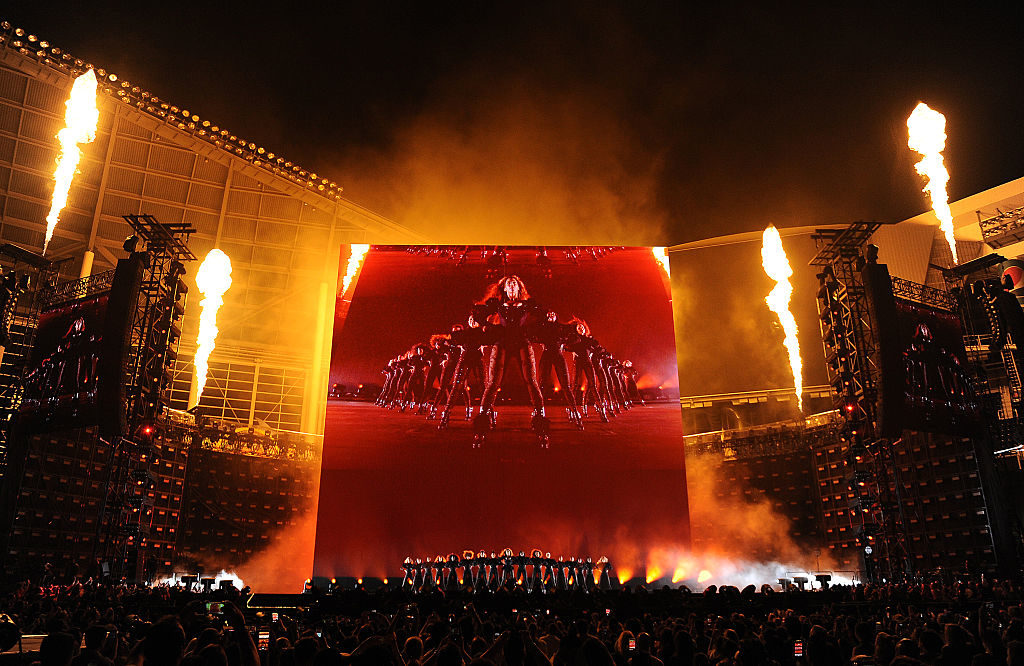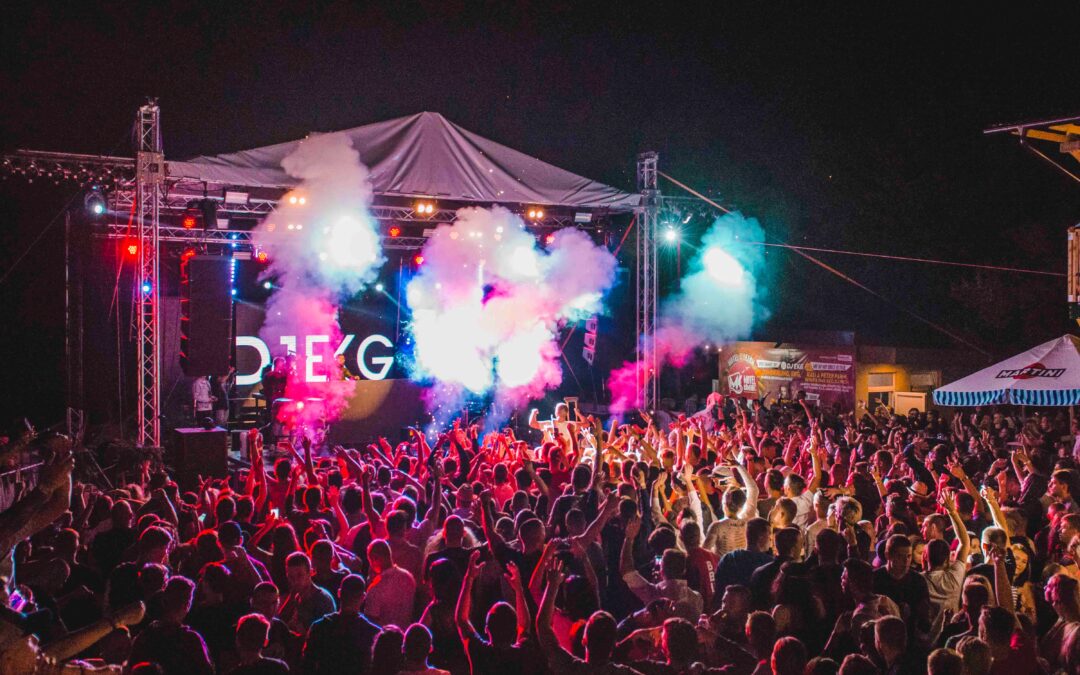Introduction
Music production is an intricate process that requires skillful execution at various stages, including recording, mixing, and mastering.
However, there is one aspect of music production that stands out as a crucial element for a successful live performance:
Live Sound Engineering. Live sound engineering is the art of capturing and manipulating sound in real time during live music events, ensuring that the audience experiences a sonically immersive and unforgettable performance.
In this blog post, we will delve into the world of live sound engineering, exploring its significance and impact on music producers and artists alike.
We will also examine the essential equipment, techniques, and challenges faced by live sound engineers, drawing insight and examples from popular music to highlight the importance of this craft.
Understanding Live Sound Engineering
A. Defining Live Sound Engineering and Its Role in Music Production:
Live sound engineering is the practice of managing the audio aspects of a live music performance.
It involves a combination of technical expertise, creativity, and adaptability to ensure that the music’s quality remains pristine, irrespective of the challenges posed by different venues and setups.
The role of a live sound engineer goes beyond merely amplifying sound; it requires a deep understanding of music dynamics, the ability to interpret artists’ intentions, and the skill to translate studio-produced music into an exhilarating live experience.
B. Key Components of Live Sound Engineering:
To comprehend the significance of live sound engineering fully, let’s examine its key components:
- Sound Reinforcement: Live sound engineers are responsible for ensuring that the music and vocals are amplified clearly and evenly throughout the venue, creating a balanced and enjoyable listening experience for the audience.
- Monitoring: Apart from the main speakers that deliver sound to the audience, live sound engineers also manage stage monitors. These are speakers or in-ear monitors that provide musicians with a clear mix of their performance on stage, allowing them to hear themselves and their bandmates effectively.
- Signal Processing: Live sound engineers employ various signal processors like equalizers, compressors, and effects to shape and enhance the sound as it is delivered to the audience.
Essential Live Sound Equipment
A. Overview of Must-Have Equipment for Live Sound Engineers:
Live sound engineering requires a diverse range of equipment to facilitate seamless sound delivery. Some essential gear includes:
- Mixing Consoles: The heart of any live sound setup, mixing consoles allow sound engineers to blend and balance various audio signals from microphones and instruments.
- Microphones: Selecting the right microphones for each instrument and vocalist is crucial. Dynamic microphones are often used for live performances due to their durability and versatility.
- PA Systems: Public Address (PA) systems consist of speakers, amplifiers, and crossovers, delivering the sound to the audience with clarity and power.
B. Understanding the Functions and Applications of Each Equipment:
Let’s look at popular music examples to understand how live sound equipment impacts the overall performance:
- Beyoncé’s “Formation World Tour”: Beyoncé’s live shows are renowned for their exceptional sound quality. Live sound engineers for this tour employed high-end mixing consoles and meticulously positioned microphones to capture Beyoncé’s powerful vocals, complementing the energetic choreography and intense visual spectacle.

Beyonce performs during the opening night of the Formation World Tour at Marlins Park on April 27, 2016 in Miami, Florida. (Photo by Frank Micelotta/Parkwood Entertainment via Getty Images)
- U2’s “360° Tour”: U2’s iconic stadium tour utilized innovative PA systems with advanced speaker arrays, allowing the band’s music to reach every corner of the massive venues. This exemplary use of sound reinforcement technology created an immersive experience for fans worldwide.
Setting Up for Live Sound
A. Venue Considerations and Acoustics:
Live sound engineers must adapt their approach to suit different venues, taking into account the room’s size, shape, and acoustic properties. For instance, an indoor theater will require different sound distribution than an open-air stadium. An understanding of how sound interacts with the venue’s surfaces is crucial in delivering a superior audio experience.
B. Properly Configuring PA Systems:
Configuring a PA system involves placing speakers strategically to avoid feedback and achieve even coverage. The principles of speaker placement and aiming to play a significant role in shaping the sound that reaches the audience.
C. Ensuring Signal Flow and Connectivity:
Efficient signal flow is vital to avoid technical glitches during a live performance. Live sound engineers must meticulously check cables, connectors, and signal paths to maintain a seamless audio connection.
Microphone Techniques
A. Selecting the Right Microphones for Different Instruments and Vocals:
Different instruments and vocals require specific types of microphones to capture their unique qualities. For example, condenser microphones are ideal for capturing the nuances of a grand piano, while dynamic microphones are better suited for loud and dynamic instruments like drums and guitars.
B. Proper Placement and Mic Techniques for Optimal Sound Capture:
The position of microphones significantly affects the sound quality. For example, placing a microphone too close to a guitar amp’s speaker might result in an overpowering and harsh sound, while placing it too far might lead to a weak and distant sound. Live sound engineers must use their expertise to find the sweet spots for each instrument and vocalist.
Check out: Music Mastering Tips & Techniques
Mixing for Live Performances
A. Understanding the Basics of Live Mixing:
Live mixing involves blending all the individual audio signals from microphones and instruments into a cohesive and harmonious mix. Live sound engineers must have an acute sense of hearing to make real-time adjustments, ensuring that every element of the performance is heard clearly.
B. Tips for Balancing Sound and Achieving Clarity:
Achieving a balanced mix is crucial in live performances. For example, a rock band’s mix might require more emphasis on the drums and guitars, while a jazz ensemble’s mix might focus on preserving the subtleties of each instrument.
C. Utilizing EQ, Compression, and Effects in Live Sound Mixing:
Live sound engineers employ EQ to shape the tonal balance, compression to control dynamic range, and effects to add depth and dimension to the sound. However, moderation is essential, as excessive processing can negatively impact the overall sound quality.
Troubleshooting and Dealing with Challenges
A. Common Live Sound Issues and How to Address Them:
Live sound engineers must be prepared to handle various challenges, such as feedback, signal interference, and equipment malfunctions. Quick problem-solving skills and familiarity with the equipment are crucial in resolving these issues without disrupting performance.
B. Dealing with Feedback and Other Sound Problems:
Feedback, the high-pitched squeal that occurs when a microphone picks up its amplified sound, is a common issue in live performances. Techniques like using EQ notch filters and adjusting microphone placement can help prevent and manage feedback effectively.
The Role of Live Sound Engineers in Collaborative Settings
A. Communicating with Musicians and Artists:
Live sound engineers work closely with musicians and artists to understand their preferences and artistic vision. Effective communication ensures that the sound engineer can translate the performers’ intentions into a flawless live experience.
B. Working with Event Organizers and Venue Staff:
Live sound engineers often collaborate with event organizers and venue staff to ensure all technical requirements are met. Coordinating with stage managers, lighting designers, and audiovisual teams is essential for a successful live show.
VIII. Advancing Your Live Sound Engineering Skills
A. Continuous Learning and Staying Updated with Technology:
The field of live sound engineering is ever-evolving, with advancements in technology and techniques. Sound engineers must stay updated through workshops, seminars, and online resources to keep their skills relevant and innovative.
B. Gaining Practical Experience and Building a Portfolio:
Practical experience is invaluable in live sound engineering. As aspiring live sound engineers, gaining hands-on experience is essential.
Volunteering for local events, assisting established engineers, and interning at sound production companies are great ways to build experience and connections within the industry.
Moreover, building a portfolio showcasing your work, including audio recordings and videos of live performances you’ve engineered, will demonstrate your capabilities to potential employers and clients.
Examples from Popular Music
To truly understand the impact of live sound engineering, let’s explore a few iconic live performances and the role live sound engineers played in creating unforgettable experiences:
- Queen’s Live Aid Performance (1985): Queen’s performance at Live Aid in Wembley Stadium is often regarded as one of the greatest live performances in history. The live sound engineering team behind this show managed to capture Freddie Mercury’s powerful vocals and the band’s dynamic sound perfectly. Their skillful mixing allowed the audience to feel the energy and emotion of the band’s performance, creating a timeless moment that continues to inspire musicians and live sound engineers to this day.
- Nirvana’s “MTV Unplugged” (1993): Nirvana’s acoustic performance for MTV Unplugged showcased a different side of the band’s music. The live sound engineering team masterfully handled the delicate balance required for an acoustic set, highlighting Kurt Cobain’s raw and emotive vocals, as well as the subtle nuances of the instruments. The result was an intimate and hauntingly beautiful performance that resonated deeply with audiences worldwide.
- Daft Punk’s “Alive 2007” Tour: Daft Punk’s “Alive 2007” tour is a prime example of how live sound engineering can elevate electronic music performances.
The live sound engineers skillfully mixed and manipulated the duo’s electronic tracks, integrating real-time effects and samples. The result was a transformative experience that blurred the lines between DJ set and live band performance, leaving fans in awe of the sonic journey.
Check out: Music Producer vs Audio Engineer: Career Paths in Music
Conclusion
Live sound engineering is an integral aspect of music production that breathes life into studio-produced music during live performances. It involves a combination of technical expertise, artistic sensibility, and problem-solving skills to deliver captivating and immersive experiences to audiences.
From selecting the right equipment and microphones to mastering the art of live mixing and troubleshooting, live sound engineers play a pivotal role in shaping the way music is experienced live.
Aspiring live sound engineers should embrace opportunities to learn, gain experience, and continuously adapt to advancements in technology and techniques.
By understanding the unique requirements of different venues, collaborating effectively with musicians and artists, and striving for excellence in every performance, live sound engineers can create magical moments that leave a lasting impact on both artists and audiences.
In a world where live performances hold a special place in the hearts of music enthusiasts, the art of live sound engineering remains a driving force behind the transformation of studio creations into unforgettable and electrifying moments in the spotlight.
Whether it’s a stadium concert, an intimate club gig, or a festival stage, the work of live sound engineers ensures that music is not merely heard but experienced in all its glory.
So the next time you attend a live show and find yourself immersed in the music, take a moment to appreciate the dedicated professionals working behind the scenes to make that experience truly extraordinary.






